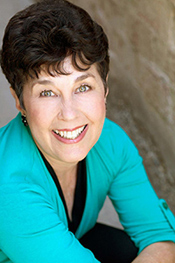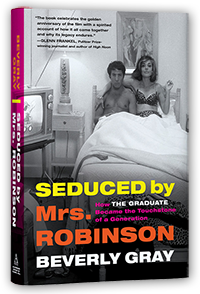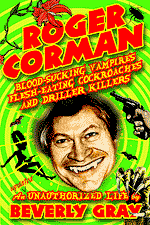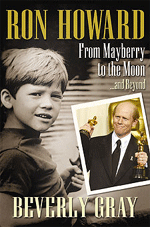Why, exactly, do we love
movies about the making of movies? Showbiz seems like a glamorous , mysterious
world that most of us aspire to enter. Many of us nurse private fantasies about
a stardom we know we’ll never achieve, and there’s a perverse comfort in
discovering that show business has its seamy side—and its tragic side—as well.
Curiously, in the early days of sound movies, most of the showbiz stories on the screen—pictures like Busby Berkeley’s 42nd Street and Footlight Parade as well as chestnuts like Stage Door—were devoted to the challenge of putting on a theatrical production. It was Broadway that seemed most glamorous back then. Berkeley’s famous musical numbers, like the “By a Waterfall” extravaganza from Golddiggers of 1933, contained elements like scantily-clad chorines swimming in formation, gliding underwater, or sliding down waterfalls into welcoming lagoons. Such moments were often shot from above, and the joke was that they couldn’t possibly work in a Broadway theatre.
Despite moviedom’s ongoing fascination with success on the Broadway stage, the 1930s also saw two popular flicks that chronicle a newcomer’s overnight rise to Hollywood stardom. In 1932, George Cukor directed Constance Bennett in What Price Hollywood?, the saga of a waitress who’s discovered by a film director with a drinking problem. She quickly achieves fame and fortune, while he spirals downward, with romantic complications galore. It was briefly popular, though no one pretended it was a realistic look at the film industry. A mere five years later, William Wellman directed Janet Gaynor and Frederic March in A Star is Born, which is quite similar to What Price Hollywood ? in its plotting, but adds the complication that Vicki Lester (née Esther Blodgett) loves and marries her champion, fading actor Norman Maine. The lavish production, which some say mirrored the troubled marriage of Barbara Stanwyck and Frank Fay, was enormously successful.
Almost twenty years later, in 1954, Cukor took another crack at the material, which was to be his first musical and first Technicolor film. This version of A Star is Born showcases the powerful singing of Judy Garland, who was looking for a career comeback, as well as the dissolute complexity of the ageing thespian played by James Mason. (In his George Cukor’s People, film historian Joseph McBride calls this film, despite its studio butchering, Cukor’s very finest effort.) The restored version I’ve just finished watching is 178 moments long, and there are some unusual tonal shifts from cheery musical comedy hijinks to downright tragedy, but this is the version to see. And hear: Garland belting “The Man That Got Away” is a moment not to be missed. (It was nominated for a Best Song Oscar, but—unthinkably—lost to the sweet, syrupy “Three Coins in the Fountain”).
Making Esther into a singer opened the door for two further remakes featuring pop legends of the moment. The 1976 film, starring Barbra Streisand and Kris Kristofferson, shifts the familiar story to the world of rock ‘n’ roll, adding onscreen sex, a soupçon of infidelity, and a really memorable poster. The year 2018 saw Bradley Cooper’s re-imagining of the story, with Lady Gaga garnering raves for her first serious acting role.
Who knows when the next version will show up? Maybe—why not?—it could involve an older female star and an appealing young male newcomer. After all, there’s nothing that says that the woman can’t be the knowledgeable veteran of Hollywood. But we as audience members wouldn’t easily accept that as anything but grotesque. See, after all, Sunset Boulevard.








No comments:
Post a Comment